- Y.SH
- Persian Tasty
- 1808 views
- 0 comments
Caviar lovers describe the luxury of eating caviar as an experience that involves all their senses—from its beautiful appearance to its enticing aroma and delicate taste.
When people first start trying caviar, one thing that surprises them is how varied the product can be. In addition to different sizes and flavors, caviar comes in a wide range of colors—making it more interesting than they expected! It's fascinating to see so many caviar types available, making the experience even more exciting. But why are there so many colors? —Are all these newfangled varieties caviar? Learn the most common hues and what you can expect to encounter in this helpful guide!
It is a fact that no two Caviar batches are exactly the same, regardless of whether it comes from the same species or farm. Believe it or not, the color of roe is a surprisingly important aspect of understanding caviar. The caviar colors we will be discussing are:
- Red
- Black
- Orange
- Yellow
- Gold
- Silver / Gray
- Brown
In the rest of this article, we will refer to caviar as roe and use the USA and Canadian definitions (rather than only highlighting its traditional meaning) since that is what most people are familiar with in America today. The most common way of categorizing caviar is by the colors red and black, which loosely separates sturgeon caviar from fish roe. We will first cover these two main colors in detail, then get more granular with others.
The Cyruscrafts online store offers a variety of caviar, so if you want to buy the best caviar, it is a good idea to compare them and then choose the best caviar.
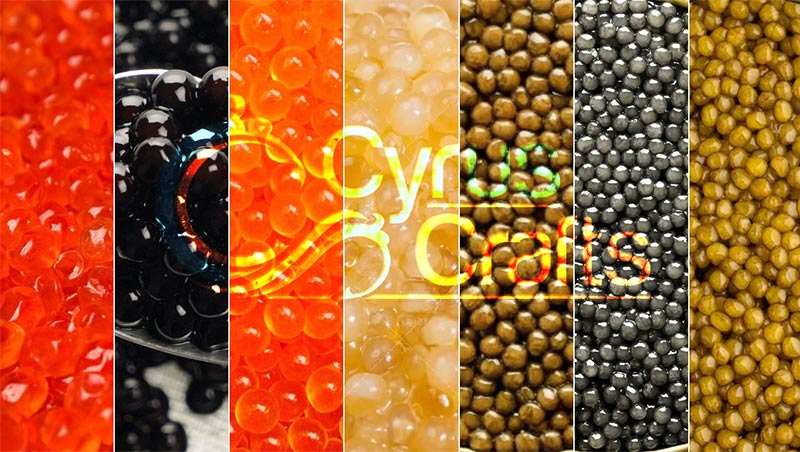
Cyrus Crafts; Luxury & Unique Products
Red Caviar
Red caviar, made from Salmonid eggs, is known for its bright red hues and large (yet still smaller than Sturgeon) eggs. It can often be mistaken for authentic Sturgeon—but don't worry! The two types of fishy goodness are pretty distinct. Red caviar has a texture unlike any other food, and these brightly colored eggs are often found in:
- Salmon Roe
- White Fish
- Trout Roe
- Carp Fish Roe
- Tobiko (Flying Fish Roe)
Although red caviar is not a genuine member of the sturgeon family, these non-sturgeon fish roes are famous for their unique flavor profiles. Red caviar is an excellent alternative to Sturgeon because it offers a similar taste while being more affordable.
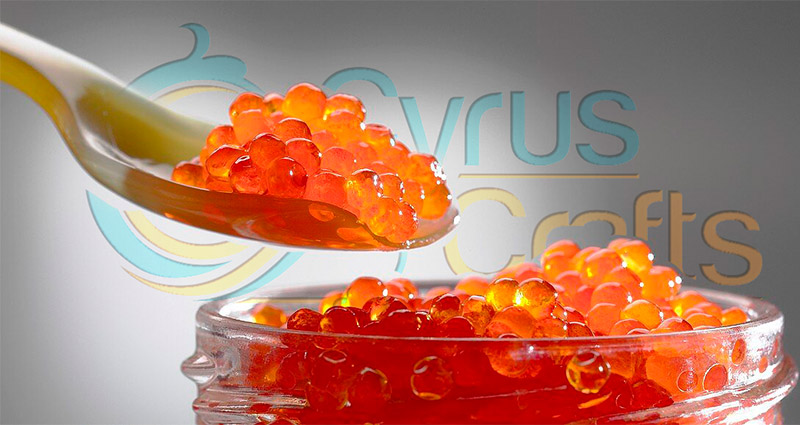
Black Caviar
"Black caviar" is a term for roe that comes solely from the sturgeon fish. Though the name might make one assume its dark color is just categorizing it, the colors under this label range from black or brown to gray—or even gold! So, you can expect these colors of caviar from Beluga, Sturgeon, Osetra, and Kaluga—as well as many other fish within the Acipenseridae family. Though the terminology can be confusing at times, if you take a look at what each term represents (what kind of sturgeon it comes from), this is ultimately considered true caviare because it comes directly from the most popular species used in production.
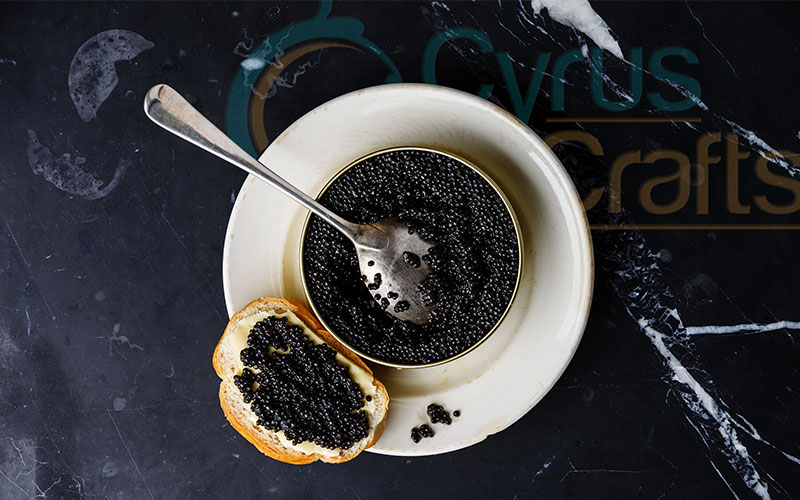
Orange Caviar
Orange Caviar is coated in tones of orange rather than bright reds. These pearls have a different shade and are often more extensive but smaller than salmon eggs. Rainbow Trout roe is an example of orange Caviar. When compared to red Caviar, such as Salmon roe, one can identify the tonality difference between red Caviar and orange Caviar, as well as the flavor profiles when eaten.
Roe from the carp fish is orange in color. It's commonly smoked, and many people find it has a similar profile to smoked salmon.
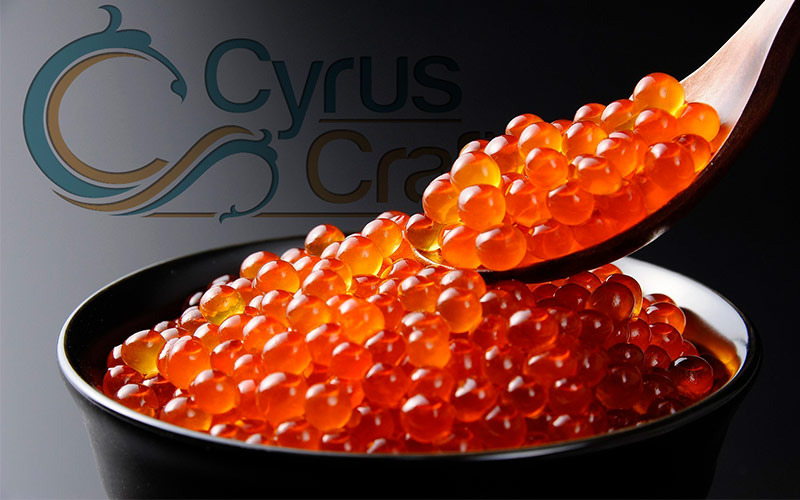
Yellow Caviar
Yellow caviar is typically associated with roe that comes from albino fish. Sterlet Caviar, for example, has a gray-brown color, but the albino version of this variety forms eggs that appear as golden yellow or light orange.
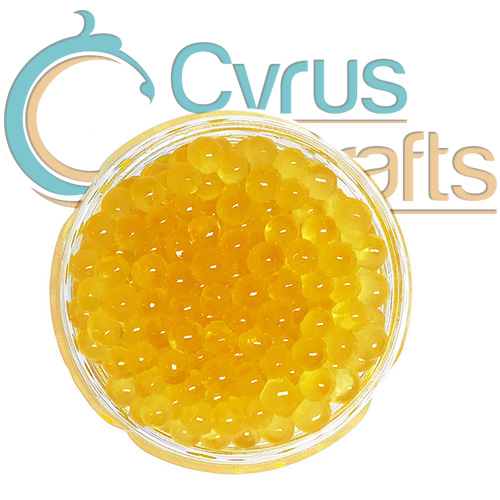
Gold Caviar
Tasting Gold caviar from a Sturgeon is a sought-after experience. It's a fact that a small fraction of Sturgeons produces golden-colored eggs, which are rare and rather expensive to purchase. When buying golden caviar, one should ensure that it is imperial or a very high grade to get the best pearls experience.
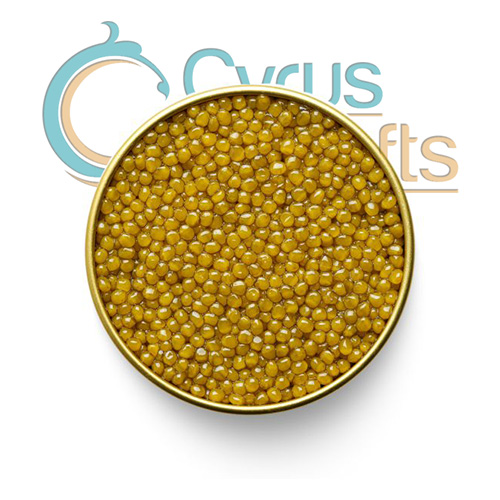
When you go to buy golden caviar, make sure it is imperial or of the highest quality. However, keep in mind that you are not only paying for the color. You must also take into account other important factors that make this caviar your best choice. Almas caviar is considered a kind of gold caviar because it costs more than other types in addition to its delicious taste.
Silver Caviar
Caviar pearls can also appear in hues of gray and silver, which is a typical color found in Sevruga Caviar. Upon close inspection, this Caviar has hues of light gray that often have a shine of silver encompassing each egg. Beluga Caviar is also another type of gray caviar and is the most desirable and exclusive Caviar in the world. These steely gray pearls, complimented with a silver coating on each pearl, make it an unforgettable delicacy as well as a stunning color to view when opening the jar or tin encompassing it.
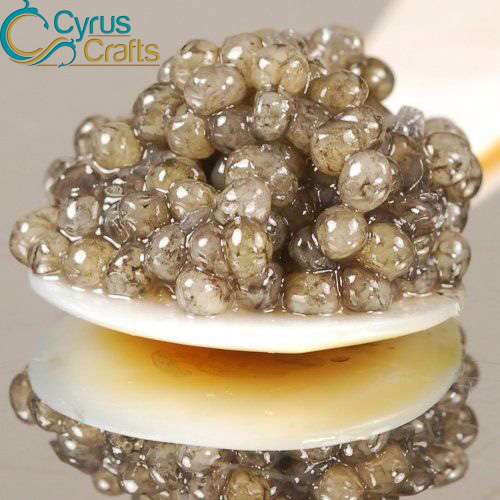
Brown Caviar
Many kinds of Caviar come in brown tones, with hues of bronze and copper scattered throughout. These Caviar are known for their elegance because of their balanced appearance. Brown Caviar is surrounded by hues of jade and jet-black, making it a very visually stunning seafood. Also known as Sturgeon Roe or Salt Cured Salmon Roe, this fish egg delicacy has an enriching flavor!
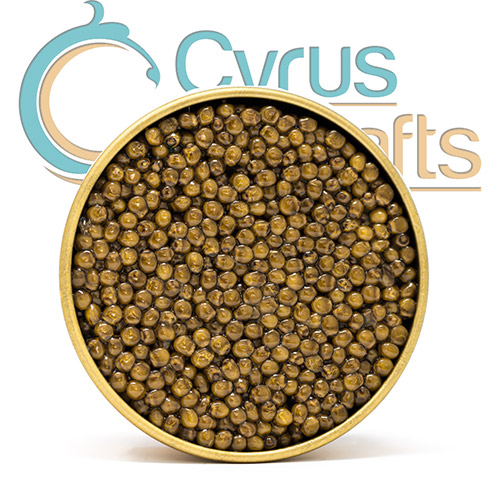
Does Caviar Color Matter?
When it comes to experiencing caviar, color is a big factor to take into account. The colors of caviar can vary from batch to batch, even if the roe comes from the same species of Sturgeon or farm. Each caviar's hue and array provide a narrative about its origins. Because the visual experience of eating caviar is so important to people who are true connoisseurs, they will pay a premium for this luxury food because it enhances their enjoyment.
In short, Caviar color only sometimes correlates to the quality of the roe. As a rule of thumb, authentic Sturgeon Caviar often appears in hues of black to gold, while roe, which is brightly colored, comes from non-sturgeon species. Depending on one's taste and preference, anyone can enjoy caviar as long as they know what the different hues represent and the unique flavor profiles of each delicate pearl.








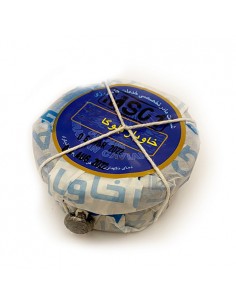

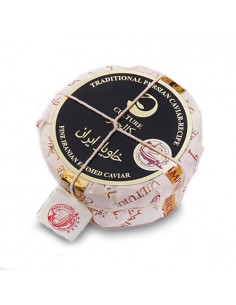

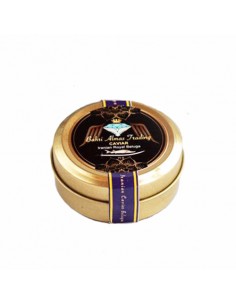

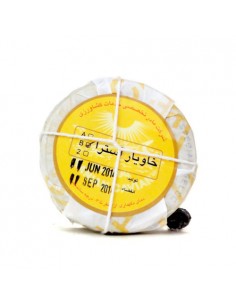

Comments (0)